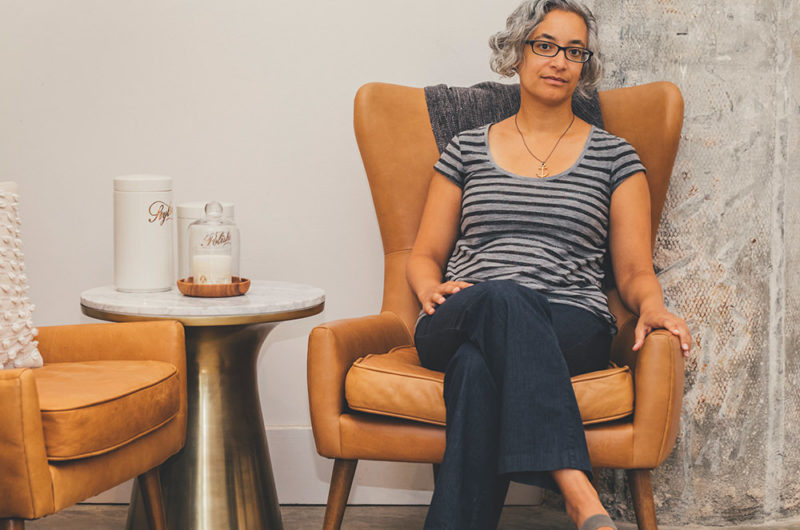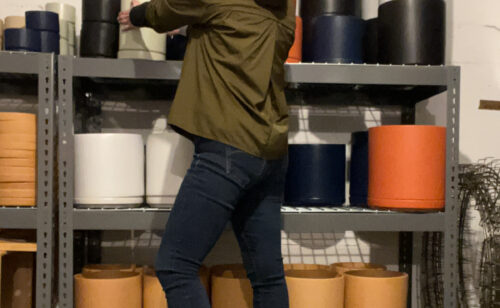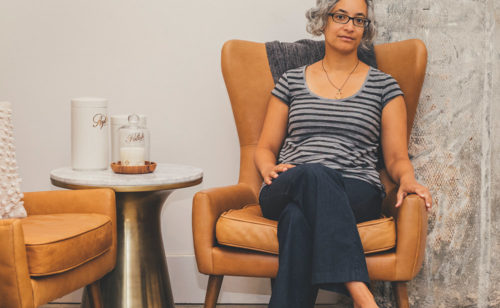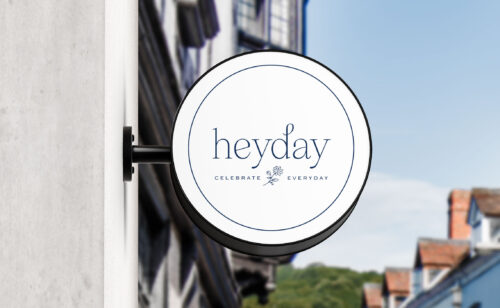
This blog post was originally published in 2014, and during that time it has proven to be one of our most popular posts. Since wholesale pricing is such an important topic, we thought it would be a good idea to revisit this piece and update with some new resources. Enjoy!
Wholesale Pricing Guidelines
While different people have different pricing formulas they use, one thing is pretty solid across the board when it comes to wholesale pricing for handmade products; you need to price for profit at the wholesale rate.
This is important because ideally that’s how you’ll be selling most of your products. Don’t come up with your retail price, then cut it in half for wholesale – that’s very likely to make wholesale prices unsustainably low.
When planning your pricing, you first need to come up with a wholesale price that pays you for your time, labor, materials, overhead, employees, etc. This price should have profit built into it so that you are able to not only stay afloat, but grow your business. This is especially tricky these days as cost of living and inflation are on the rise. Be sure to check out our recent blog post Balancing Profitability and Fair Wages In a Small Business for more information on this important topic.
Once you’ve set your wholesale price, double that price to create your retail price (“suggested retail price” to your wholesale customers). When selling the product yourself on an ecommerce site, use that retail price yourself.
What to include in your pricing formula
I had the pleasure of listening to Marlo Miyashiro of Creative Arts Consulting speak at School House Craft about pricing last fall. Marlo says:
“My advice to new creative entrepreneurs has always been to structure your pricing so that – at wholesale you are doing back-flips over your prices every time you sell even ONE of them. Then, double that price to arrive at your true retail price.”
When pricing, Marlo suggested we consider:
- Labor: Labor is not negotiable. Build labor into your price, so you can easily hire someone in the future.
- Cost of goods and materials used to create your product, including tools.
- Overhead: your rent, utilities, supplies, phone, etc.
- Profit: the margin needed to reinvest in your business. Without profit, you can’t grow, hire, or even take a break from your business.
For labor, consider what you would feel comfortable paying an employee per hour, and work out how many of your products you can make in an hour to figure out labor costs per product.
For weekly tips like this, subscribe to our newsletter
"*" indicates required fields
Even if you don’t plan to sell wholesale, Marlo believes that you should still follow this pricing strategy, as it keeps pricing fair within your industry.
She also had the great advice that if there is something you don’t yet have for your business, but you plan to have it in the future, such as a studio space, factor the future studio rental cost into your overhead so you can make that money, and so you will still be making profit once you’re paying for the studio.
Wholesale Pricing Formulas
Marlo scoured the web for some pricing formulas for handmade goods, and also gave us her personal formula. You can see that these are similar, but use different methods to arrive at reasonable prices.
1) Pricing formula from Danielle on the Etsy blog:
Materials + Labor + Expenses + Profit = Wholesale x 2 = Retail
2) Pricing formula from Andreea at Launch Grow Joy (read article):
(Labor + Materials) x 2 = Wholesale x 2 = Retail
3) Pricing formula from Mei at the Pragmatic Designer:
Materials + Labor = Item Cost x 2.2 = Wholesale x 2.2 = Retail
4) Pricing formula from Marlo at Creative Arts Consulting:
(Materials x 3) + Labor = Wholesale x 2 = Retail
For even more information about wholesale pricing, be sure to check out this blog post: Wholesale Product Pricing For Your Creative Business. This Q+A style post is filled with real life questions from creative business owners in our community and expert advice from Lela Barker, the owner of Lucky Break Consulting [no longer operational].
Additional Wholesale Resources
- Wholesale Product Pricing For Your Creative Business
- 10 Tips for Wholesaling Handmade Items
- Creating a Wholesale Website — And How to Do it Right
- Setting Up Wholesale Accounts on Shopify
Looking for Support?
We are Shopify Experts for Creative Ecommerce Shops; we can help with the retail and wholesale sides of your Shopify website. Take a look at our design portfolio here, and learn how we help people sell wholesale on Shopify here.
If you have any questions for us or advice to share, I’d love to hear from you in the comments here!
A Newsletter That Goes Beyond Shopify 101
It’s easy to find beginner info about ecommerce online. If you’re past that? Subscribe to our newsletter for advanced strategies and need-to-know info for established shops. You'll get:
- Weekly tips to help you market and sell your products
- Updates when there is news that may impact your site
- Round ups of interesting links and info for brands
- Invites to our live trainings and webinars
- Instant access to our past emails
"*" indicates required fields
59 thoughts on “Wholesale Pricing Tips and Formulas”
Leave a Comment
Related Posts
Let's take your online shop to the next level
The Shopify websites we design have a reputation for substantial improvements to ecommerce conversion rates and online sales. Let's talk!
















What a great article! Thanks so much for including my formula as well…
Thanks, Andreea! Pricing can be so hard to get right. I think it would probably be pretty simple if we could keep emotions out of it.
this is hugely helpful – thank you. one of the things I still can’t seem to wrap my head around is the ‘labor’ number in these equations. time is money but I how much?
Hi Elizabeth! Yes, it’s definitely hard to decide how much to pay yourself. An easier way to think of it would be to imagine you became so successful that you had to hire an assistant to help you with production work. What would you pay her per hour or per piece? That’s your labor cost!
Then, when this dream scenario does come to pass, you don’t need to raise your prices to be able to afford your worker, it will already be included in your pricing formula.
Hi Arainne
We are a newly established Export/Import company based in Indonesia. We purchase our goods(food/beverages/furniture/computer appliances/textiles+clothing) and a host of other items from Indonesian Wholesalers/Distributors, thereafter, will export to South Africa. Since i am new at this, can you please advise as to how i go about raising markup prices, bearing in mind shipping costs/duty taxation etc for export purposes. The current formula we use is based on the USA Dept of Interior (NACS Pricing for reselling).
Another query i have is if this is a generic pricing formula markup percentage formula which is used in Indonesian markup pricing.
Thanks for a great insight in your blog!
Regards.
Ricky
Hello Ricky,
This article is focused on setting wholesale pricing if you created handcrafted goods. I am not sure what would work best for your particular situation.
I sell digital download printables. I’ve noti many sellers price these on Etsy at $5 for an 8×10. So if I do that, my wholesale price would probably be $2.50 which seems like nothing. It takes time and software and skill to make a printable so $2.50 doesn’t make me do backflips 🙂 I often feel I should go higher like $8 or $10 but I’m not seeing evidence that the market will bear that price. I’m also new and don’t have a lot of reach yet. The idea with printables is that once they’re made I can sell thousands with practically no effort. But that’s not happening anytime soon. Thoughts? Should I price at $5 because that’s common (and many lovely printables are available for free online) and just shoot for a huge quantity of printables to sell? Or focus on custom work and/or start selling tangible prints that I mail out and charge more? Thoughts?
Hello Sarah,
These are all great questions with no easy answers. My wholesale article, above, won’t apply exactly to you, because it’s about handmade items – items which must be created for every sale. You’re right that yours are different, as you get to make it once and then theoretically sell it forever with no further production work. So your pricing formula would be different than the ones above. It sounds like volume is your key to growth, and our Pitch Kit may be able to help you get the word out:
https://aeolidia.com/pitch-kit/
This article is very helpful. I run a ethical textile and handmade goods company. We are in the beginning stages and every little piece of information is super helpful.
Thanks,
Great articles! Got a lot of useful information on all of them! I have one doubt though: when you talk about “doing back-flips over your prices every time you sell even ONE of them”, what do you mean? Does this mean double the price of production cost should be the wholesale price? Thanks!
Hello Johan, by that, I believe that Marlo means that you should be happy with your pricing per product. You shouldn’t depend on huge quantities of orders to feel like you’re being paid for your work and time.
I have recently started a handmade caramel/candy company where we hand stir, hand cut, hand wrap, hand label, and hand package all of our products. The problem is this all takes a great deal of time. Using the formulas above, I realized that we are selling our products retail what we should be selling wholesale. Example, a box of 24 caramels, we currently sell at 14.99 a box retail. But using the formulas above we should be selling them at 11.XX wholesale and 22 retail but that seems so high for a box of caramels. Because we do everything by hand, our labor forces higher costs. How can we get around that or charge reasonably and still make money?
Hello J!
$14.99 sounds super cheap to me for a product that is hand stirred, cut, wrapped, labeled, and packaged! I would not be surprised at all to pay $22 for a box of caramels that had so much personal care put into it.
So your choice is either:
1) Really promote, explain, and market how intensively you craft your caramels, make that the selling point, and ensure that people understand the value you offer. People that value handcrafted treats will gladly pay what your work is worth.
2) Find a way to quit doing some of these things by hand so you can lower costs and labor and charge the lower price.
Ultimately, understanding your unique selling proposition will guide you in which is the right choice for your particular business, and you can learn more about that here:
https://aeolidia.com/unique-selling-proposition/
Hi Arianne.
Thanks for this great article! I have a few questions for setting up my business and I was wondering if you can help clear this up for me. I will be a wholesaler/distributor to retail for a very unique product with zero local market competition. That’s why I’m setting the price based on cost.
The cost of will be around $2 per piece. What would be a healthy percentage for the profit margin? Is there a good formula to calculate this? I do presume though that the retailer would not be able to sell this for more than $10.
Would appreciate your feedback
The article above is meant for handmade businesses, where you are buying supplies and doing the labor. I’m not sure what a good profit margin for a distributor would be.
hi, interesting and helpful discussion. can help me with how to identify minimum quantity for whole sale ?
Thanks so much for this. The varied formulas are a great help
Hi, great article. I would love to know your opinion on my situation. I have a leather goods business and on my larger items, $200-$600 price ranges. if I price them the way your suggesting (which is what I have been told is standard) my prices are too expensive and very little people will buy them as its above the market value for comparable items you can buy else where. So I have my prices set to move product direct to consumers and in two years it’s been working great. But as I am wanting to grow the business this year my plan is to get into more retail shops. But we are not able to do 50% off of these prices for the larger items and make the profit that is needed to make it worth it. So currently we have just been offering our wholesale prices at what we need to make money which comes out to like 60/40. Is this acceptable in the market or will this greatly effect how many retailers want to purchase from me. Thanks so much for your response. 🙂
Hello Nathan,
My first instinct is to tackle this problem behind the scenes – can you lower the cost or your materials (without sacrificing quality, of course!), increase efficiency, lower overhead costs, or find another way to create more profit without raising prices? If not, and you have all of your production costs as lean as can be, that’s when you need to look at increasing your prices.
You are right that wholesale customers aren’t going to be thrilled with less than their standard markup. You may find that they then mark your products up higher than you would suggest, and then you’re in direct competition with them on pricing, which isn’t a great situation for them. You’ve been trying to compete based on price with your business so far, and it seemed to be working well, but now you’ve hit this problem growing via wholesale that shows a hole in your pricing strategy.
The upper limit on pricing for luxury leather goods is much higher than your current price point. This doesn’t mean you should raise your price sky high, but do remember that you offer something special – a handmade in America product. If you are speaking to your perfect customers and communicating what you do properly to them, you have room to raise prices to move to this next step with your business. Best wishes!
Hi! Thanks for the article…very helpful, but I still have a question. We figured our cost and have 3 different boutiques we’re ready to negotiate with. Two of the stores are in high-end boutiques selling items close to $100 and the other location is in a regular plaza selling items for around $60. My question is, If I know the store is going to sell my item for a higher price, is it fair for me to raise my wholesale price?
Another side note question… Is it acceptable to ask for a minimum purchase during negotiatiation?
Thanks!!!
Hello! Thanks for stopping by. No, you don’t want to offer different prices to different wholesale clients. It’s your wholesale customer’s business what they charge, and your business to make sure you’re being fairly compensated for your work. If a wholesale client can make more money off of your work, good for both of you – that means that they will be happy to buy from you. Yes, you can absolutely have a minimum purchase amount, and this is a standard thing to do.
[…] Edit: Found this article which I think I'll go by unless others offer any other good advice here: https://aeolidia.com/wholesale-pricing-tips-formulas/ […]
Glad I found this site; great article. However, I do have a question. For wholesale pricing, do I factor what it costs me to ship my products from China?
This post is about handmade goods, so doesn’t account for shipping from China. Thanks for stopping by!
Hi Arianne. I am just starting a new business in South Africa designing scarves and pocket squares. My question is about pricing wholesale locally within South Africa versus pricing wholesale for another market – the US or Europe. Should my wholesale price change (go up slightly) when selling to a US or European market? I am thinking about a change in currency value as well as my shipping costs. Any advice would be greatly appreciated.
Hello Erin,
Thanks for stopping by! I’m not sure what the answer to this is, but I would recommend asking in our Facebook group for creative product-based businesses: https://www.facebook.com/groups/aeolidia.shipshape/ – there may be other business owners there with experience in this area.
The MOQ will depend on the wholesaler. I run a couple of gyms and was giving towels with annual memberships. I started buying 50 pcs at a time then when it took off I started 500 pcs at a time which lowered my cost per piece by 40%. It is all a numbers game. I went from giving them away to selling them at my gift shops. If anyone is interested in a new product you can try Turkish Peshtemal Towels they are very popular nowadays. Here is the best wholesaler I found so far.
https://fabricdome.com/
[…] * If you choose to work with a wholesale distributor or retailer, determining the % profit to build into your wholesale pricing is a critical step. A great resource to help you with this calculation is Arianne Foulks’ article “The Not-So-Dark Art of Wholesale Pricing.” […]
I am in a strange situation my boss told me to research for our new product what price is better for our product.
Deficulties
1 i dont know cost
2 we dont gave similar competition
3 we have only product in this division so we have see all employees storage and transport
Kindly alart me on
Sheikazm@gmail.com
That does sound difficult! I think I’d see if I could get more information from my boss if I was in your position. Best wishes!
We make handmade goods in China too!! 😉
@Ophelia, I run a social enterprise in China that’s looking to expand into wholesale. Though I’m not an expert, I don’t include the shipping costs into the wholesale price. I have a sliding scale for shipping costs for wholesale buyers- for small orders, the client pays for the shipping. For mid-size orders (where my profit is higher), then we split shipping. And for large orders (where I have high profit), then I pay for shipping.
Hi Arianne, I’m concerned about my product and raising the price. I have a salad dressing business (just started less than a year ago). Currently selling 10 ounce bottles for $5 per bottle. This seems to be a good price point- Everything is handmade (fresh squeezed limes, fresh ginger, etc). My cost per bottle for 3 of the 4 varieties is about $2.60 BUT that doesn’t include labor or other costs (I get the commercial kitchen space for free and I do all the work). I am getting more popular and someone wants to buy wholesale from me. If I sell to her at $3 per bottle, I’m only making about $40 cents per bottle (and then when I factor in labor it really will be next to nothing). I already looking into lowering my costs (working on that), but I don’t want to outprice myself (who wants to pay $8 for 10 ounces of salad dressing?) what are your thoughts?
Lots of people want to pay $8 for 10 ounces of salad dressing! Your product should always make you enough money when you sell it wholesale, so you either need to raise your pricing (and elevate the gourmet luxury of your product marketing), or lower your production costs. You need to be able to pay yourself, or your business can’t grow. And you need to charge as if you’re paying for commercial kitchen space, because some day you might have to. If you price this low, your business is ruined if you ever need to hire, pay rent, or sell wholesale. You need a more stable foundation. I’d highly recommend you go through the pricing workbook!
This article is very helpful. I make natural skin care products. Can you give me some direction on what number to use for profit in the calculation? Materials + Labor + Expenses + Profit = Wholesale
Thank you
Hi Molly, I’d recommend you grab the workbook to figure this out! Best wishes.
Hi Arianne,
Great article, thank you so much for all the tips!
I have recently started selling hemp oil and seeds online via my own website however have had interest in my products from a gourmet grocer. They have asked for my wholesale price and also RRP. My question is, what is the difference between RRP and what I have priced my products at on my website where I sell direct? Is there a difference? If so, how can I work out my RRP?
Thanks in advance,
Bianca
It is a good note to remember to build your brand persistently. Having able to capture the right market would definitely turn your investments into a positive one. And creating commendable price ranges of wholesale jewellery supplies would enable you to attract the bigger audience and sell better.
Hello Arianne!
I’m thinking of starting a dressmaking business out of my home and have a question about pricing my garments. Since I would be working on commissioned products out of my home, is it necessary to multiply the materials and cost total by 2 in order to gather the wholesale price? I’m in a tough position similar to Gemma above where my prices would be astronomical and may scare potential customers away. All of my college courses taught the same formulas above, but I’m not currently renting a space where utilities are a factor or having to employee anyone besides myself. That being said, if the business does well, I may look into purchasing a space outside of my home and that would be a pricing factor. What do you suggest? I appreciate your input!!
Hello Jessica,
It limits your ability to grow if you don’t plan for it in the beginning. And if you price low, you’re devaluing your whole industry, and not doing your fellow dressmakers a favor! I’d recommend seeing where you can cut down materials costs and get more efficient, to be sure you aren’t paying more up front than you need to. Then yes, do account for your labor and the future space you may purchase. That’s what will make your business sustainable. Best wishes!
Hello Arianne,
I am into a wholesale business from past 25 years. Recently, our Prime Minister Mr. Narendra Modi brought a new policy named GST. It is creating a lot of problem for the business. The manufacturers do not want to lower their profit margin so they’ve added all the expenses in the price of the product and lower our profit i.e the wholesalers. Our profit margin for a single product has just dropped to half. So, I am not able to understand, what should be done? How should I regain the same profit?
That sounds very challenging. You will have to decide if you need to raise prices, and if so, what your competitors are doing. Best wishes!
Hi Arianne,
Do you include annual IRS Income Tax into Expenses?
Hi Mike,
You want your profit to be able to pay for every business cost, so yes, you’d want to consider that. It’s no good having taxes eat up all your profits!
does that apply to now?